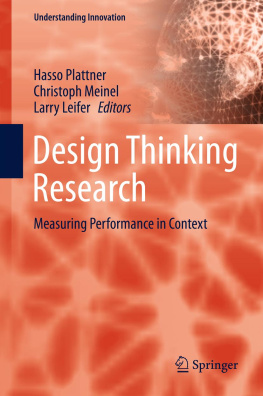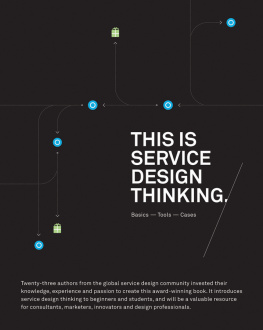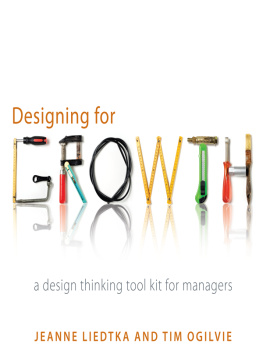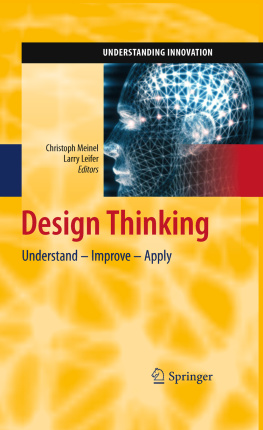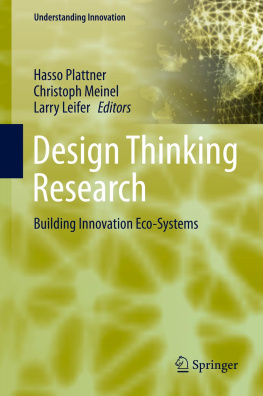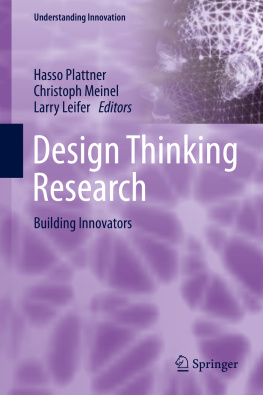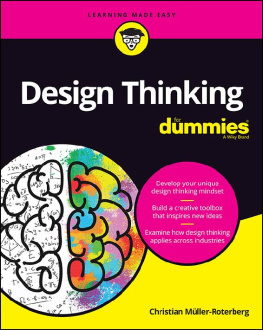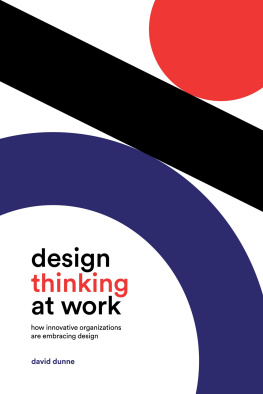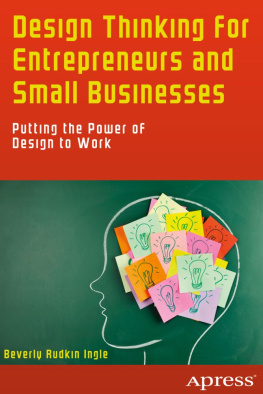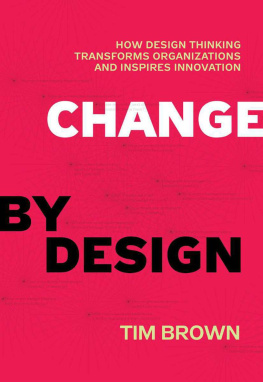Design Thinking as Hunting for Big Ideas, AND, Transporting Them Home to the Organization
1.1 Understanding Innovation Is About Knowing How to Measure It
The path of design thinking is filled with various idea-fragments (Baya 1996; Meinel and Leifer 2011; Sonalkar 2012). One of the core challenges faced by design-thinking teams is to navigate through this sea of fragments, to keep all fragments in their sights while constantly testing alternative configurations in pursuit of a concept worth investing in. During each design thinking operation, we are certain to face challenges. One important finding in all design thinking research projects is that deep design thinking is a synthesis challenge more than it is an ideation challenge. The path is constantly being molded and re-shaped by events and findings. Several steps along the way are sure to be different than on any previous search. Way finding is an adventure that enthralls the design thinker and the researchers who observe closely. In time, we face a moment in which a clear path forward unfolds. It is that point in the cycle where synthesis and divergent thinking, analysis and convergent thinking, and the nature of the problem all come together and resolution has been captured. In design thinking processes there is no solitary action or procedure that actually defines the process. There are as many different design processes as there are design thinkers.
In this edition of Understanding Innovation, you will find research reports about many different lines of study into the nature of the syntheses process with a keen eye to measuring team performance in three distinct scenarios.
Co-located control : The first is in the semi-controlled environment of co-located teams in d.school courses at Stanford University and the Hasso Plattner Institute in Potsdam.
Distributed control : The second context is that of largely uncontrolled distributed teams in design-courses within Stanfords ME310-Global Network.
Business embedded : The third context is that of corporate teams in the wild, an environment that is largely unobservable in the research sense while tending to be over-controlled for innovation purpose.
The advantage of the first two scenarios is observability, access to the players, and the relative absence of intellectual property protection concerns. Different experimental settings can easily be implemented and tested, a hypothesis can be formulated, discussed, and affirmed or eventually rejected. The advantage of the third context is the opportunity, however difficult to achieve, for validation in real-life business practice.
The recurrent theme in this edition is the difficulty we face in making performance measurements with robust causality in the face of uncontrolled variables. However, for the committed design researcher, difficulty is a call to duty, an opportunity, an incentive to get creative, and this is definitively true for all our researchers and PhD students in the HPI-Stanford Design Thinking Research Program. Getting creative in this context is to synthesise new and better experiments with new and more sensitive instruments to sort the wheat from the chaff, as some of our ancestors once quipped. In ongoing projects and their related research questions, all the research teams involved are looking from various angles and multiple points-of-view in order to triangulate findings in a way that maximizes repeatability while retaining generality.
Our researchers value the notion that they, themselves, must be involved in the design process and related technology in order that they might be in the right place, at the right time, and have right point-of-view to capture insights for connected technology development. They recognize the importance of societal factors and the needs of consumers as individuals and members of society. They are mindful of the link between critical technical functionality and critical user experience. In order to look at those issues from all perspectives and in order to give a multifaceted assessment to the research questions we have been delighted in working with great teams of engineers, computer scientists, humanists, educationists and cultural scientists. In the second edition of our series, we introduced the Innovation Hunter-Gather metaphor. Hunters-gatherers are looking for specific solutions to specific problems. This model has emerged from our ways of thinking, discussing, and testing to increase the probability of successful innovation from research, development, and marketing activities. This model has proven useful as a means to communicate the core ideas in design thinking. It emphasizes that there are different roles to be played in the activities of innovating. There is a time to hunt and a time to gather. There are times to seek the next big thing and times to deliver the next big thing. The Hunter-Gather Model that we designed describes the dynamics of design thinking. The model that we have elaborated in the second book Design Thinking Research Studying Co-Creation in Practice is about enfolding events, awareness, observation, and real time intervention. We were and still are hunting for ideas that sell. And, another important aspect in our ongoing endeavour is to solve problems, perhaps even to remove problems through design thinking, and to create new products and remarkable services. Design thinking has taken root and continues to help shape our pursuit of understanding. We prefer now to shorten the label and focus on the Hunter Model. Findings reported in this edition have refined our instruments, focused our attention on critical design team activities, and strengthened their correlation with performance. Still to come will be findings in volume 4 where early evidence suggests that the hunting model may be as or more valuable for the task of bringing big ideas and design thinking back home to the organization. We promise surprises to come.

